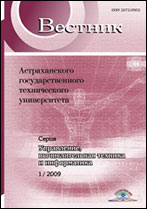|
COMPUTER SOFTWARE AND COMPUTING EQUIPMENT
The automated system model-controlled design of the sheet glass defects identifying
D. Yu. Petrovab
a Saratov State University, Saratov, Russia
b Institute of Precision Mechanics and Control Problems of the Saratov Scientific Center of the Russian Academy of Sciences, Saratov, Russia
Abstract:
An information model of an automated system for identifying point defects of sheet glass is proposed, imple-mented using Harmony technology and the IBM Rhapsody Modeler software environment, which provides automation of modeling, design and testing of software. For automated detection (localization) and determination of the type (identification) of defects in sheet glass based on the class diagram, modules are implemented that are responsible for the implementation of localization algorithms, identification, interaction with sensors and cameras, archiving, data transmission to the network and data generation for display on the monitor of the operator and technologist. The industrial computer software is implemented in C++ in MS Visual Studio. The application of the Harmony software lifecycle management methodology and the IBM Rhapsody Modeler visual modeling environment has made it possible to increase the efficiency of the development of an automated system for identifying point defects of flat glass. The resulting program model of the automated system simplifies its adaptation to new operating requirements and the connection of additional hardware.
Keywords:
sheet glass, automated identification system, UML, SysML, diagrams, spot defect.
Received: 20.08.2023
Accepted: 19.10.2023
Citation:
D. Yu. Petrov, “The automated system model-controlled design of the sheet glass defects identifying”, Vestn. Astrakhan State Technical Univ. Ser. Management, Computer Sciences and Informatics, 2023, no. 4, 41–48
Linking options:
https://www.mathnet.ru/eng/vagtu779 https://www.mathnet.ru/eng/vagtu/y2023/i4/p41
|

| Statistics & downloads: |
| Abstract page: | 30 | | Full-text PDF : | 8 | | References: | 10 |
|




 Contact us:
Contact us: Terms of Use
Terms of Use
 Registration to the website
Registration to the website Logotypes
Logotypes








 Citation in format
Citation in format 